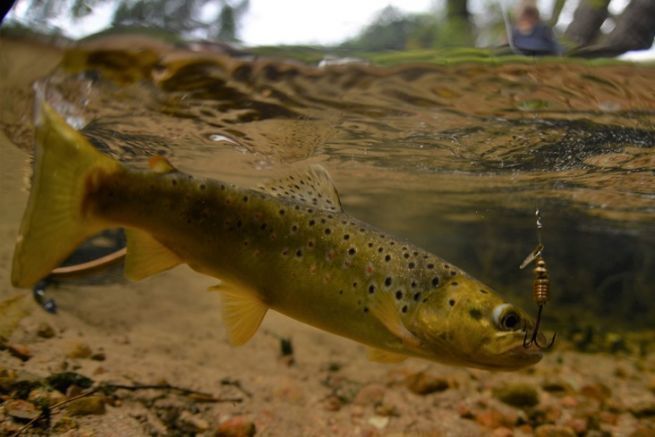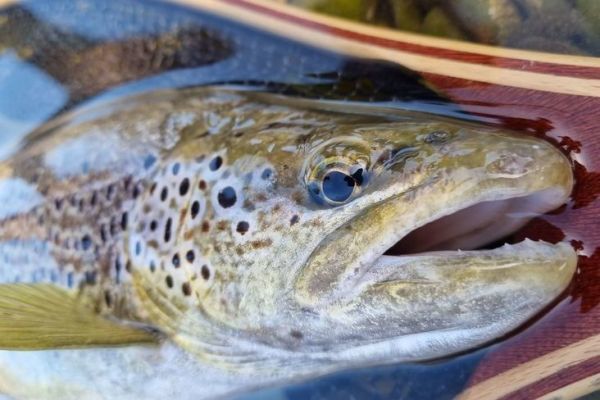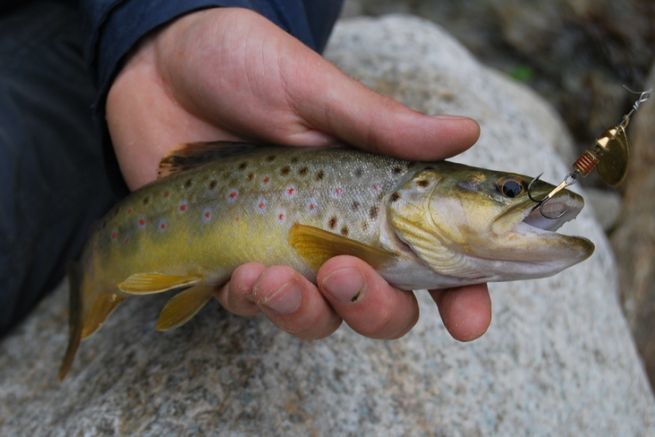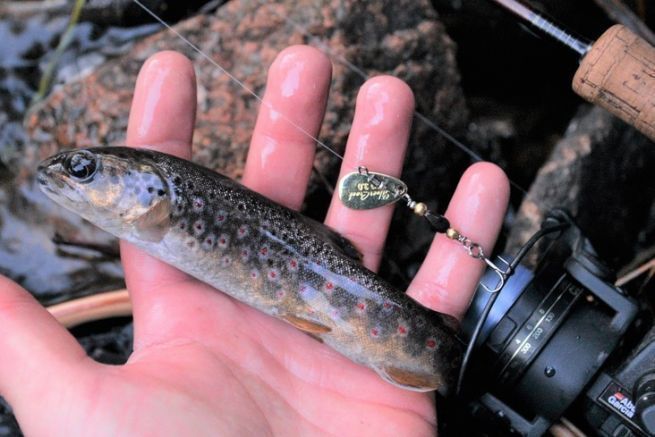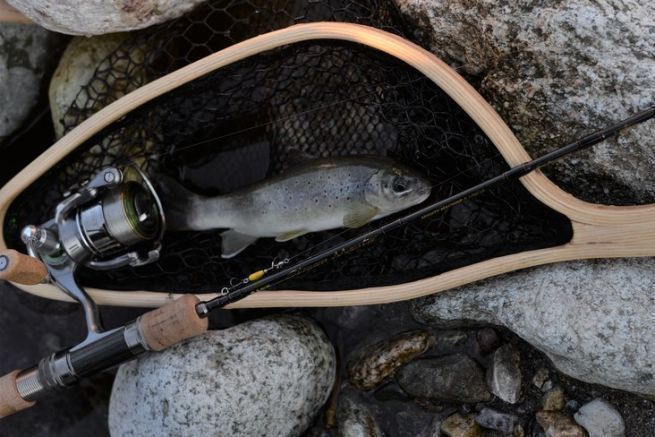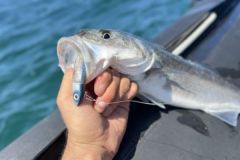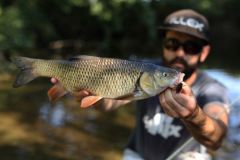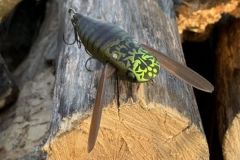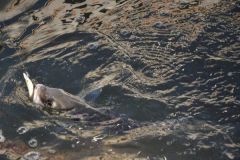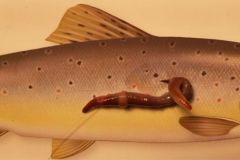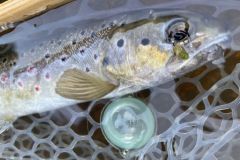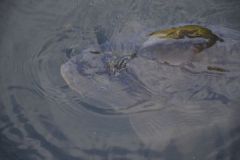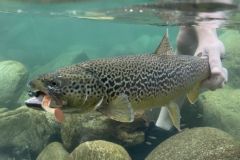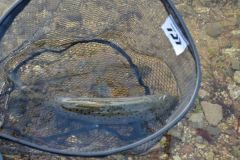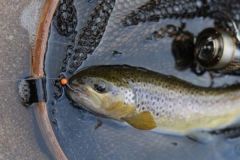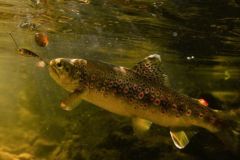The spinner is relatively simple to use. A simple throw back is enough. You cast, you reel, it's that simple. The art of fishing with a spinning spoon lies in the precision of the casts, the depth of the lure and the strategy of prospecting for spots.
Precise pitching
The casts are easy and precise. The spinner is relatively dense, due to its metallic composition. It is also strong and solid when it hits and bumps on river rocks. Moreover, its reasonable cost makes it suitable for "risky" casts in crowded, but oh so key positions. It is clearly better to go near a dead tree with an Aglia than with a sometimes expensive swimbait.
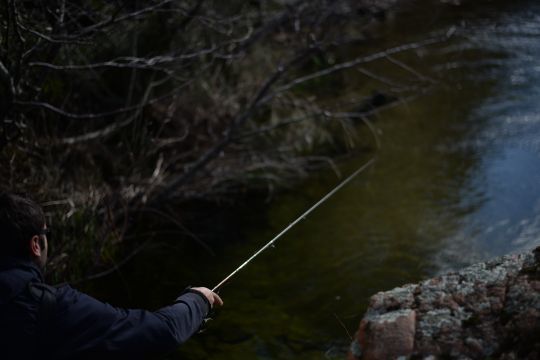
It is an excellent lure to relearn the gestures of lure fishing in the river.
Fishing strategy of the posts
You must then prospect in order to cross or flush out as many fish as possible that have not yet seen a lure. We will always fish avoiding too long casts that cross several posts for example. Short casts and a precise survey of each spot are preferred. Indeed, by trying to fish the most beautiful spot directly, the risk is to "lift" too many fish or to scare the fish because of the capture of a distant fish.
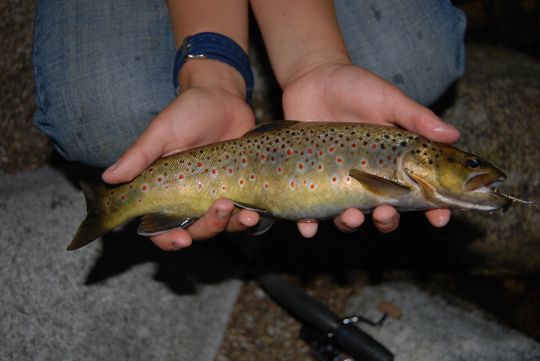
Fishing at the right depth
It is also necessary to take care to recover the lure in the good layer of water. For that, we adapt the size of the spoon and the mass of this one to the depth to which we wish to make evolve the spinning.
Then, you can more or less let this lure sink. To the bottom or just below the surface.
Finally, we will play with the inclination of the rod to drive the spoon and make it evolve correctly, especially in areas of high relief.
Adapting to the mood of the fish
You'll see for yourself, but it's not uncommon when spinning to have only follow-through or very short taps. When you see this lack of catching, it often means that the fish are active, but that something is missing to make it happen with clean hits.
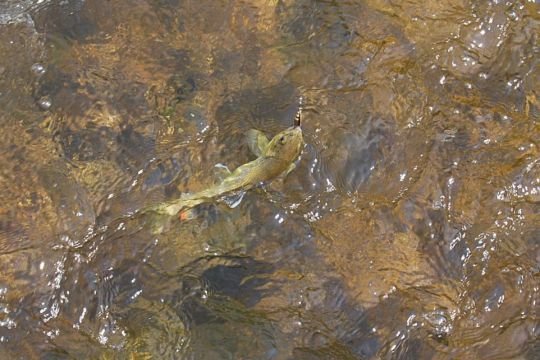
When this is the case, don't hesitate to use different models, in size or color. Sometimes you may have to fish with a swimmer fish or a soft lure which are complementary to the spoon and generate different stimuli.

 /
/ 